It is vital to tend to a toothache timely to prevent aggravation of pain, which often extends to the jaw bone. The easiest way to prevent a toothache is to follow a proper oral hygiene routine and avoid triggering factors.
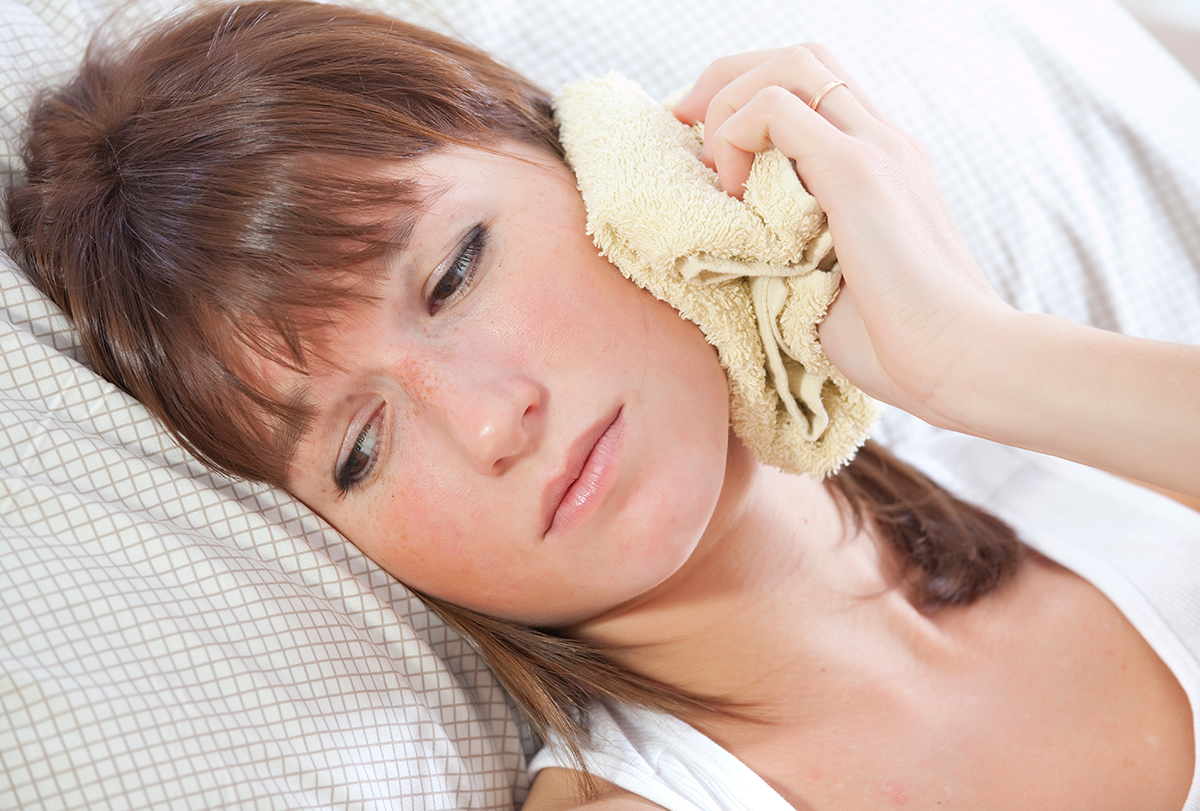
Home Remedies for Toothache Relief
The following at-home treatments can help relieve a toothache.
1. Apply a salt and pepper paste
A salt and pepper home remedy may help diminish the intensity of tooth pain.
How to use:
- Mix one part salt with one part pepper, and add a few drops of water to form a paste.
- Apply the paste all over the painful tooth, and let it sit for a few minutes so that it gets adequately absorbed.
- Rinse your mouth with water.
- Repeat this application for a few days until you register noticeable relief.
Although some studies have highlighted the benefits of salt for overall oral hygiene, it is still unclear how the salt-pepper mix helps in alleviating toothache.
2. Rinse with salt water
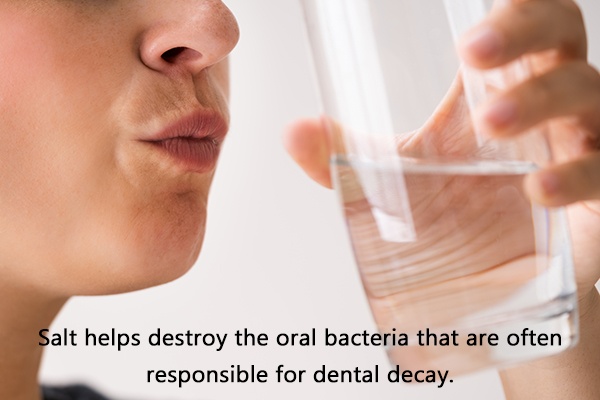
A warm salt water rinse may help reduce the intensity of tooth pain when used frequently and regularly. The gentle heat helps alleviate inflammation, pain, and overall discomfort. The salt helps destroy the oral bacteria that are often responsible for dental decay. (1)
A study suggested that gargling with a saline solution two times a day may be a convenient adjunctive therapy for preventing dry socket after getting a routine dental extraction. (2)
How to use:
Dissolve ½ spoon of common salt in a glass of warm water and use this saline solution as a mouthwash.
Studies have supported the use of warm saline mouth rinse for relieving toothache and improving overall oral health.
3. Try oil pulling
Oil pulling essentially means to use oil as a mouthwash to maintain and improve dental health. (3)(4) The oil cleanses the mouth of all toxic substances as the fats in it become soapy after hydrolyzation.
Research has also shown that oil swishing lowers the number of bacteria in the mouth. It decreases plaque and inflammation of the gums as well.
Olive oil contains phenolic compounds and anti-inflammatory agents that can help with the pain (5)(6) and thus can be used for oil pulling.
Oil pulling is an age-old technique that helps improve overall oral health. But for this adjunct therapy to yield any beneficial effects, it must be done correctly and in combination with proper oral care.
4. Use guava leaves
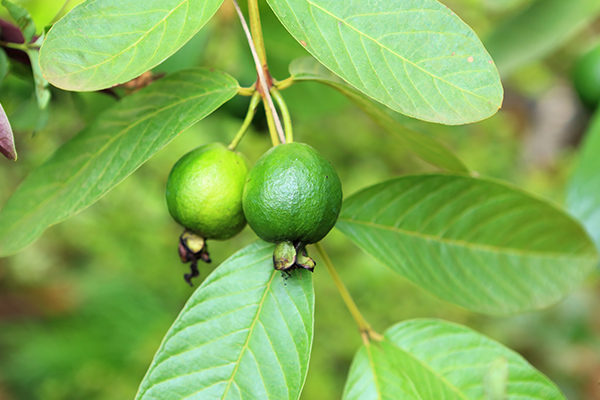
Fresh guava leaves may help alleviate a toothache due to their anti-inflammatory, antimicrobial, and analgesic properties. (7)(8)
How to use:
- Chew fresh guava leaves.
- Boil crushed leaves with water and use the solution as a mouthwash.
5. Try a cold compress
You can employ a bit of gentle cold therapy to alleviate toothache. The cold travels through the hard shell of the tooth and desensitizes the nerve endings in the pulp and the surrounding gingival tissue.
How to use:
Put a few ice cubes in a plastic bag and wrap it in a thin towel. Apply this compress to the outside of the cheek, in the area where the toothache is felt most intensely, for 15 minutes.
Note: It is not advisable to use this treatment if you have exposed nerves as it may aggravate the pain instead of relieving it.
6. Use turmeric
Curcumin, the active compound of turmeric, possesses anti-inflammatory, antiseptic, and antibiotic properties that can help relieve toothache and sensitivity. Turmeric can also help prevent plaque buildup. (9)
How to use:
Mix turmeric powder with clove oil, mustard oil, or water to form a paste, and apply it to the affected area.
7. Consider clove oil
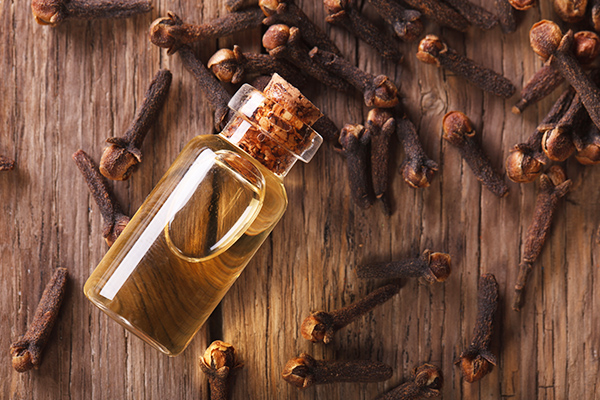
Clove oil is one of the most common home remedies for a toothache. This oil contains pain-relieving, anti-inflammatory, and antiviral properties. (10)
How to use:
- Apply the oil directly to the affected area.
- Alternatively, dip a small piece of cotton in the oil and dab it on the sore tooth.
8. Drink apple cider vinegar
Apple cider vinegar (ACV) possesses analgesic properties that can help relieve a toothache. Make sure to dilute the vinegar before use. (11)
Note: Avoid frequent use of ACV as its acidity can harm the tooth enamel.
9. Apply a tea bag
Tea bag application is a popular anecdotal remedy that can help subside the swelling and relieve the pain associated with a toothache. Black tea is a popular choice but green tea can also be used, which will impart antimicrobial properties as well.
How to use:
- Brew a cup of tea and place the warm tea bag on the affected tooth.
- Sip warm teas as they give a soothing effect.
10. Use peppermint essential oil

Methanol, the active ingredient in peppermint oil, helps relieve pain by inhibiting the pain signals. (12)(13)
How to use:
Dilute the oil by adding a few drops in a glass of water and use the mixture as a mouthwash.
11. Try garlic
Garlic is credited with potent antimicrobial and anti-inflammatory activities, which can be utilized to address various oral problems. (14)
How to use:
Crush a few garlic cloves, mix in salt, and apply the paste over the affected area.
Note: The effect of garlic in reliving toothaches is based on anecdotal evidence and is not well studied.
Self-Care Tips
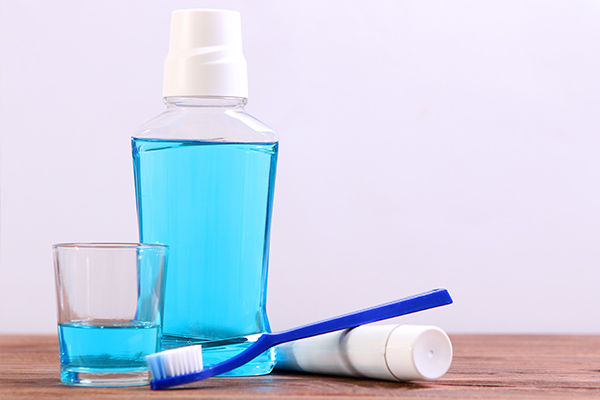
The following self-care measures can help prevent and improve toothaches:
1. Floss
Sometimes, a toothache may stem from the accumulation of food particles and other debris between your teeth. To prevent this, floss at least two times a day.
2. Use desensitizing toothpaste
For a mild toothache, you can use desensitizing toothpaste and gels to numb the affected area for temporary pain relief.
3. Do steam inhalation
A clogged sinus can cause pain in your tooth. You may do a steam inhalation or use a dehumidifier to open your sinuses and relieve the pain.
4. Quit smoking
Smoking can exacerbate your toothache. It is best to quit the habit, at least for as long as the condition persists.
5. Use an antiseptic cream
Apply a thin layer of an antiseptic cream containing benzocaine directly to the affected site for short-term relief from a toothache.
6. Have a tooth extraction
If the wisdom teeth do not find enough space to grow, get them pulled out to avoid intense pain.
Dietary Tips: Dos and Don’ts
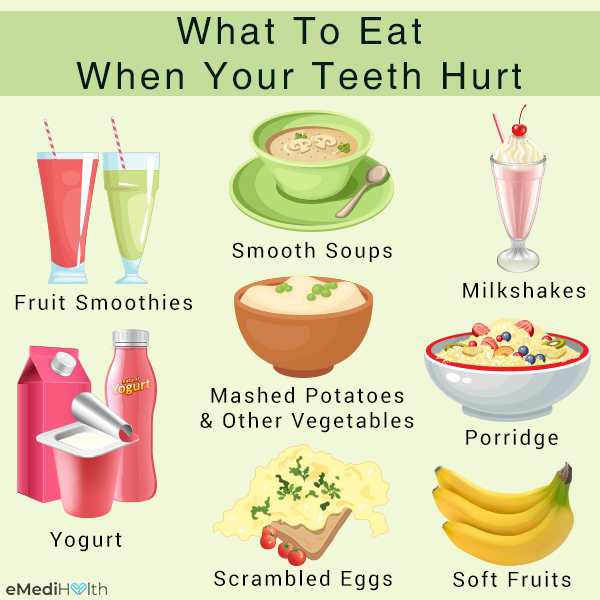
A toothache can make it very difficult for you to bite down or chew foods as any extra strain on the affected tooth can aggravate the pain. Thus, anyone with a toothache is advised to consume a soft diet as long as the condition persists.
Moreover, you should chew on the unaffected side to avoid exerting undue pressure on the painful tooth and prevent your condition from worsening.
Including the following soft foods in your diet may help minimize your dental discomfort while eating:
- Soft, easy-to-chew fruits such as peaches, watermelon, and bananas
- Applesauce and apricot nectars
- Dairy products such as cottage cheese and yogurt
- Scrambled eggs
- Milkshakes
- Pureed soups
Mindful eating is not just about what to eat but also about what to exclude from your diet. People with a toothache are usually advised to:
- Avoid unnecessary snacking between meals.
- Limit sugar and starch intake in general.
- Stay away from spicy or acidic foods.
- Limit consumption of carbonated beverages such as sodas and sports drinks.
- Avoid consuming anything that is either too hot or cold.
Preventing a Toothache

Here are some preventive measures that can help keep your oral cavity in the best condition and thereby prevent the onset of a toothache:
- Limit your sugar intake.
- Have a light dinner free from acidic, hard, or sweet foods.
- Supplement your diet with fruit and vegetable salads as these help in keeping the teeth healthy.
- Cut down on smoking as much as possible to avoid complications.
- Use fluoride-containing toothpaste, and brush your teeth two times a day.
- Use gentle, circular motions to clean the frontal surface of your teeth and gums. Clean the inner and biting surfaces of the teeth using gentle vertical strokes.
- Clean the tongue, either with your toothbrush or with a specially designed tool called a tongue scraper.
- Floss twice a day to dislodge the debris stuck between your teeth.
- Rinse your oral cavity with mouthwash to help disinfect it further.
- Go for a dental checkup at least twice a year.
- Make sure to replace your used toothbrush with a new one every 3–4 months or as soon as its bristles start to look damaged or worn out.
- Electric toothbrushes are usually preferred over regular ones, as they tend to be more effective in plaque removal.
- Avoid excessive consumption of carbonated beverages such as sodas and sports drinks as they trigger the erosion of tooth enamel.
- Limit your alcohol intake to minimize the dental damage and resulting tooth pain.
How to Deal With Toothache at Night?
In some cases, the toothache may surface only at night when you are lying down to sleep.
Nighttime aggravation of a toothache is particularly observed in people who:
- Have certain other preexisting conditions, such as sinusitis or nocturnal teeth grinding (bruxism)
- Have tooth infection
- Have an abscess
- Regularly engage in late-night snacking
- Go to bed without brushing their teeth
One simple trick to diminish the intensity of the nighttime toothache is to elevate your head while sleeping. Prop one or two extra pillows under your head to inhibit the rush of blood to your head.
Final Word
If a toothache is not met with timely and proper treatment, even a minimal degree of soreness in and around the affected tooth can escalate to unbearable radiating pain which spreads to your jaw bone.
Early treatment is key in minimizing the pain and damage caused by dental decay. So, if you notice even the slightest sign of enamel erosion, staining, or cavities, get your teeth evaluated and treated by a professional dentist.
At the same time, the best way to preserve your oral health and avoid dental problems is to follow a stringent daily oral hygiene regimen.

- Was this article helpful?
- YES, THANKS!NOT REALLY


